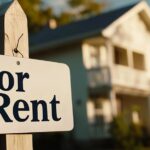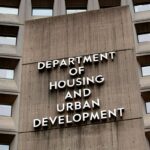ATTOM has issued its first-quarter 2024 report, which examines qualifying low-income Opportunity Zones designated by Congress for economic reconstruction in the Tax Cuts and Jobs Act of 2017. In this analysis, ATTOM examined 3,512 zones across the nation that had enough data to evaluate, indicating at least five home sales in Q1 of 2024.
The report found that median single-family house and condo prices climbed from Q4 of 2023 to Q1 of 2024 in only 49% of Opportunity Zones across the U.S. However, they were still increasing annually in nearly two-thirds of Opportunity Zones with sufficient data to measure. Those patterns, in and around low-income communities where the federal government provides tax credits to stimulate economic recovery, have continued a long-term pattern of property values within Opportunity Zones moving with broader national shifts for at least the last three years.
Key Findings:
- Median prices of single-family homes and condominiums increased from the fourth quarter of 2023 to Q1 of 2024 in 1,503 (49%) of the Opportunity Zones around the U.S. with sufficient data to analyze, while staying the same or decreasing in 51%. Measured annually, medians remained up from Q1 of 2023 to same period this year in 1,892 (62%) of those zones. (Among the 3,512 Opportunity Zones included in the report, 3,041 had enough data to generate usable median-price comparisons from the fourth quarter of 2023 to Q1 of 2024; 3,043 had enough data to make comparisons between Q1 of 2023 and Q1 of 2024).
- Opportunity Zones did even better than the nation as a whole when comparing price changes in those areas to shifts in the national median home price. For example, median values in almost 60% of Opportunity Zones went up from the first quarter of 2023 to the same period this year by more than 3.1% annual gain nationwide. (A similar pattern emerged quarterly when comparing shifts in Opportunity Zones to changes in the national median value.)
- However, in a potential sign of trouble in areas with the very lowest home values, median prices were up annually in only about 45% of Opportunity Zones where homes commonly sold for less than $100,000 during Q1 of 2024. Prices climbed, year-over-year, in about 60% to 70% of zones with higher home values.
- Among states that had at least 25 Opportunity Zones with enough data to analyze during the first quarter of 2024, the largest portions of zones where median prices increased quarterly were in Kentucky (medians up from Q4 of 2023 to the first quarter of 2024 in 65% of zones), New Jersey (58%), Tennessee (56%), Arizona (56%) and Minnesota (56%). States where prices were up quarterly in the smallest portion of zones included Utah (median prices up quarterly in 38% of zones), New York (42%), Virginia (42%), South Carolina (42%) and Alabama (44%).
- States where median home values in Opportunity Zones remained up most often year-over-year included New Jersey (median prices up annually in 91% of zones), Wisconsin (75%), Kentucky (70%), Minnesota (70%) and Illinois (70%).
- Of the 3,512 zones in the report, 1,197 (34%) had median prices below $150,000 in the first quarter of 2024. That was down from 38 percent of zones with sufficient data a year earlier. Another 558 zones (16%) had medians in the first quarter of this year ranging from $150,000 to $199,999.
- Median values in the first quarter of 2024 ranged from $200,000 to $299,999 in 797 Opportunity Zones (23%) while they topped the nationwide first-quarter median of $330,000 in just 776 (22%).
- The Midwest continued in the first quarter of 2024 to have larger portions of the lowest-priced Opportunity Zone tracts. Median home prices were less than $175,000 in 67 percent of zones in the Midwest, followed by the Northeast (47%), the South (42%) and the West (6%).
Mixed Q1 pricing trends impacted most in the lowest-priced locations, with dropping values indicating warning signs in certain markets. Nonetheless, the overall picture within Opportunity Zones demonstrated continuous signs of economic strength, or limited weakness, in some of the country’s most vulnerable regions when compared to other markets across the country. That scenario has persisted even as a decade-long housing market bubble has halted in Opportunity Zones and elsewhere, with very modest price gains in the last year.
By one critical measure, Opportunity Zones’ pricing trends continued to outperform the national average in the early months of 2024. For example, changes in typical property values across more than half of Opportunity Zones outperformed national price movements both quarterly and annually.
“Another quarter, same result. That’s the takeaway yet again inside Opportunity Zones around the U.S., where home prices still lag far behind national numbers, but gains and losses mostly keep tracking overall market patterns,” said Rob Barber, CEO for ATTOM. “Clearly, there are exceptions, especially at the lowest end of the price scale. Nevertheless, the latest data shows Opportunity Zone housing markets continuing to attract considerable interest among homebuyers pushed out of higher-priced areas in a market with very limited supplies of homes for sale. That again points to the kind of economic viability needed to lure investors who may want to take advantage of the redevelopment incentives aimed at revitalizing those communities.”
To read the full report, including more data, charts, and methodology, click here.






